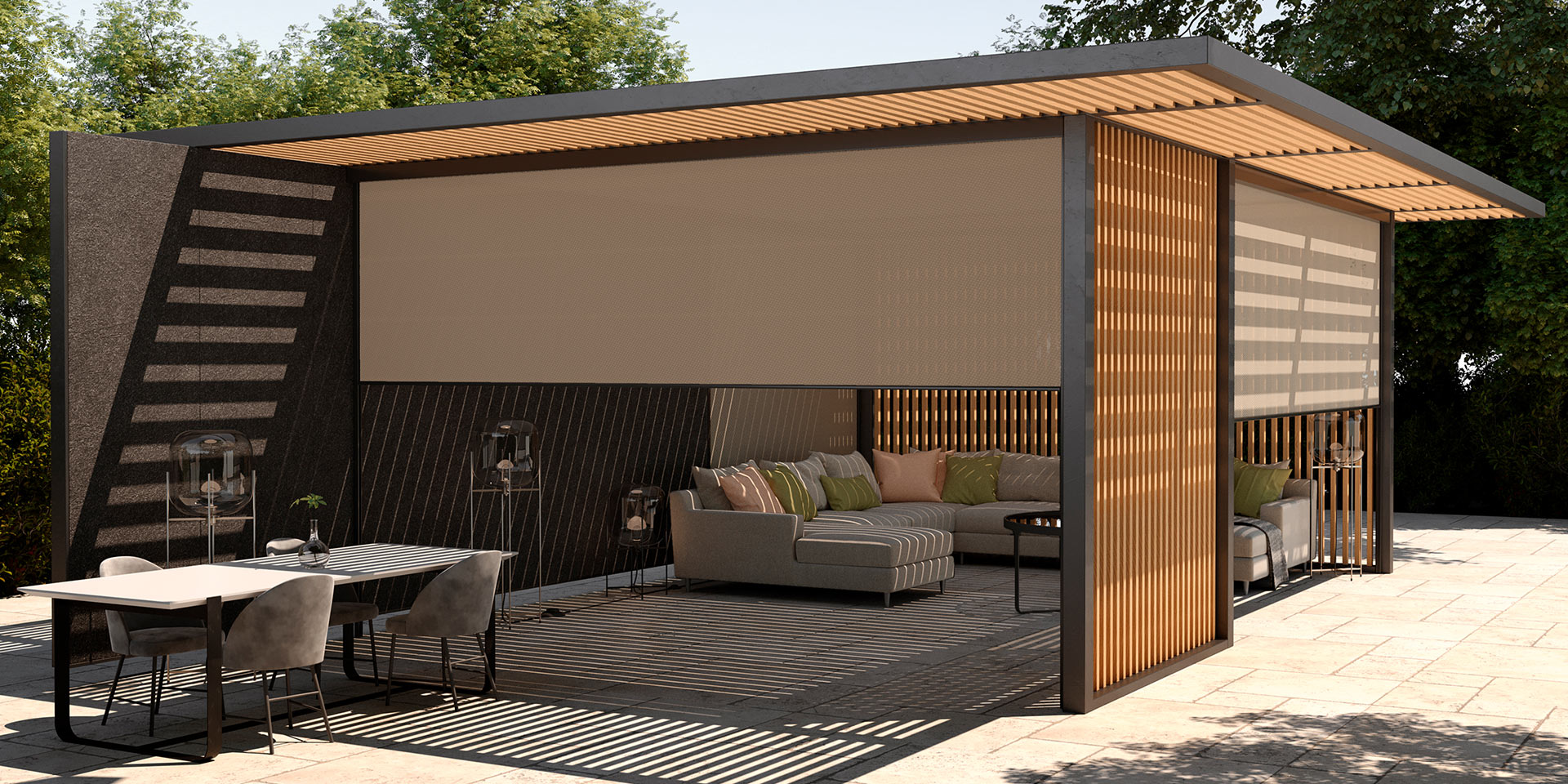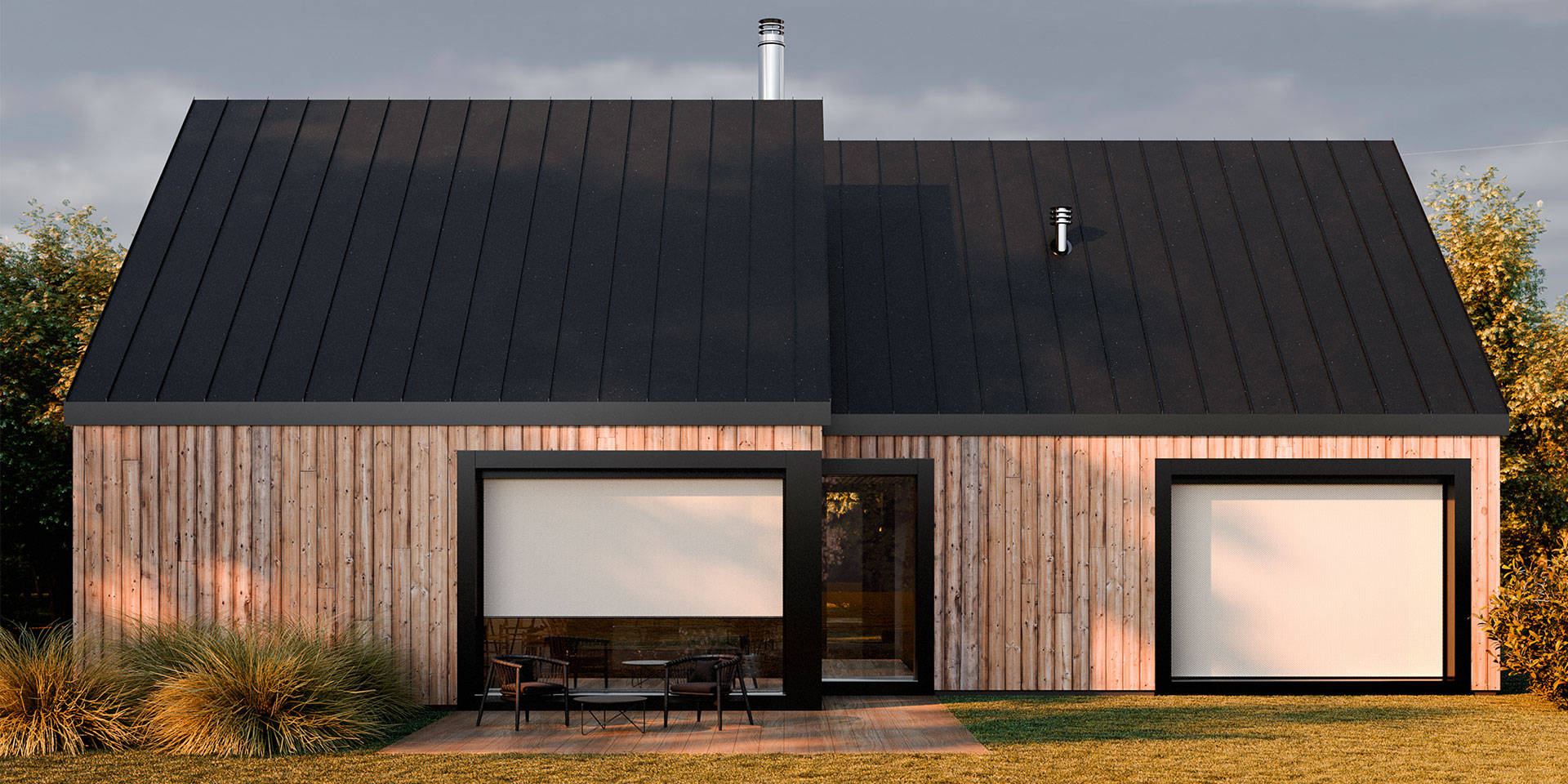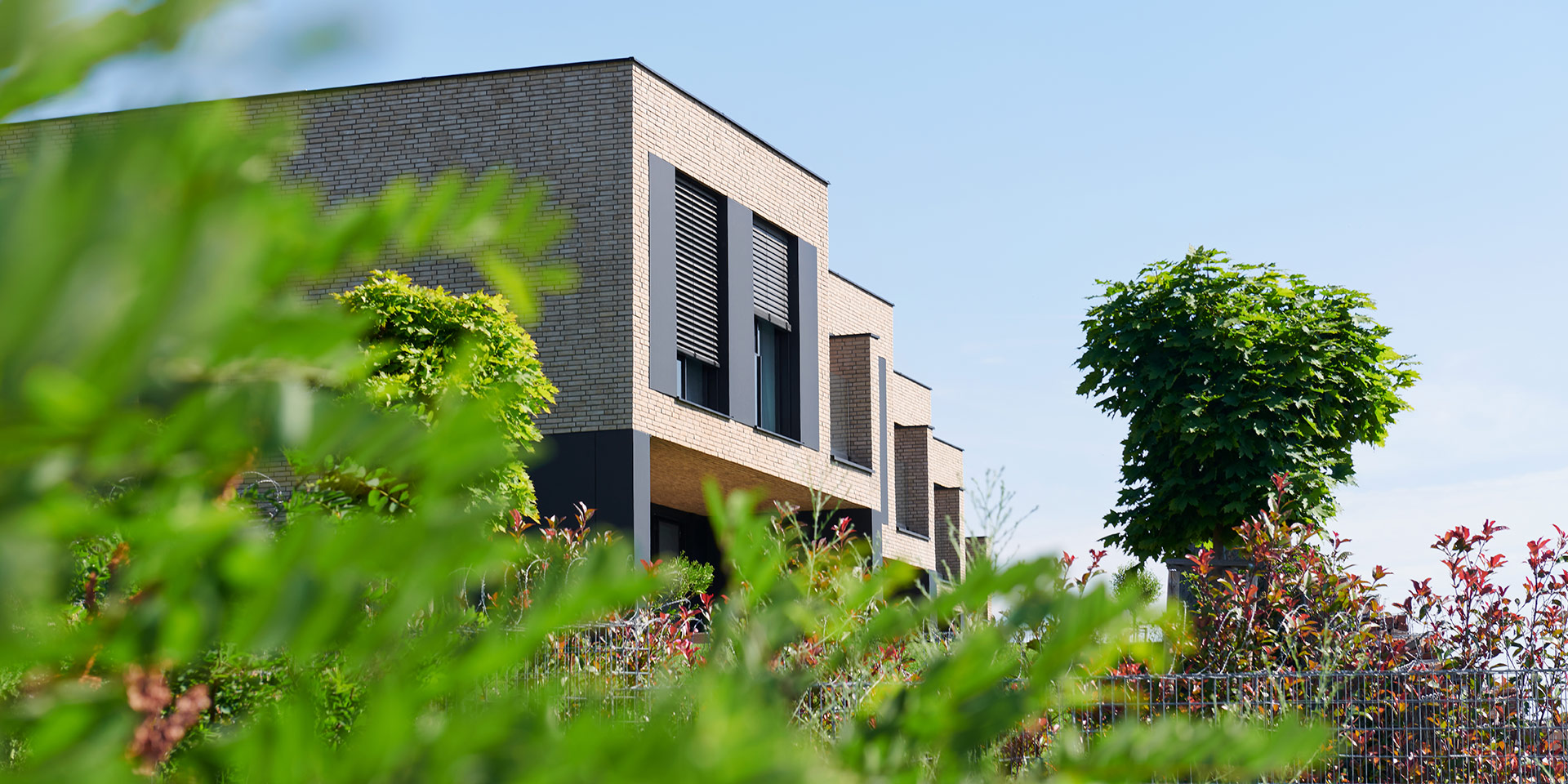Resistance of screens: how do they cope with strong wind or UV radiation?
External textile screens can resist rain, frost and wind very well, and they can cope with wind even better than external blinds. This is especially thanks to solid fabrics made of glass or polyester fibre and high-quality seams. In any case, their resistance varies depending on the attachment of the screen or the dimensions.
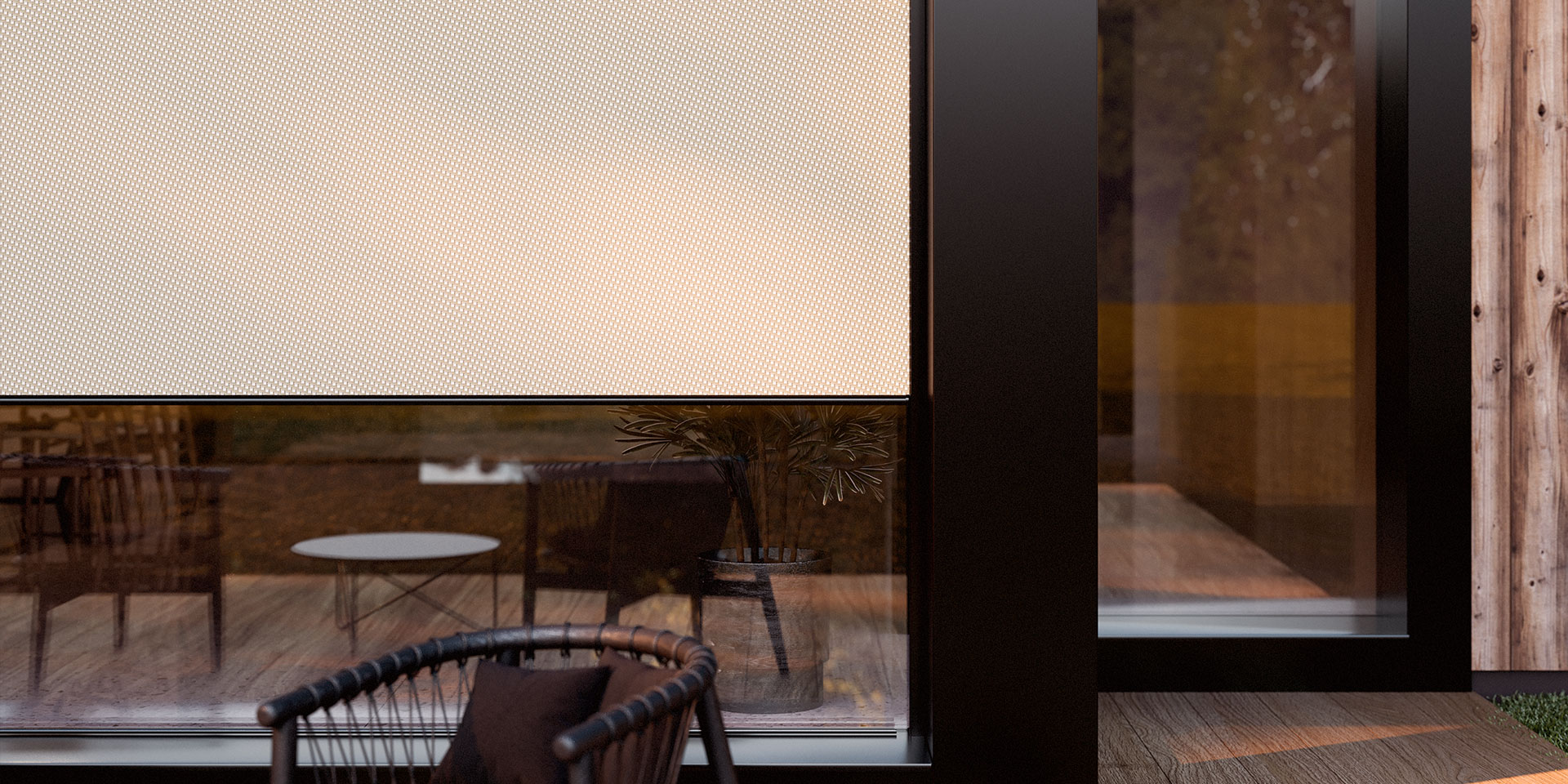
Wind resistance depends on the way of guiding
The method of attachment is a crucial factor affecting the resistance of screens to wind. Arranged in descending order from the least resistant, the ways are:
- screens guided in a string,
- screens guided in a guiding rail (with no zip),
- and screens guided in profiles with a zip, so-called zipscreens
A screen guided in a string is a simple textile screen tightened between the upper box and bottom (load) profile. The bottom profile is guided with stainless strings on its sides. This type of screen only possesses low wind resistance as the strings are anchored only at two points (on top and at the bottom), therefore they have play and a rather strong wind can rattle them. The main advantage is a lower price.
Screens that have the bottom load profiles guided in guiding rails firmly connected with the construction can resist wind considerably better although neither in this case is the fabric firmly anchored throughout its length, and it is only tightened between the bottom profile and the upper box again. The bottom profile is reliably guided in firmly anchored profiles though.
Zipscreens feature the greatest resistance. In addition, this solution incorporates a zip welded on throughout the length of the screen that serves to connect the fabric firmly with the guiding rails, and it will not be pulled out even by strong wind. So, zipscreens withstand wind excellently, even better than external blinds. On the other hand, they are more expensive.
”When wind pushes a zipscreen, its force is distributed over the entire area of the zip. As a result, the anchoring elements do not have to face such heavy force and cope with the wind load much better”, says Lukáš Musil, our commercial manager.
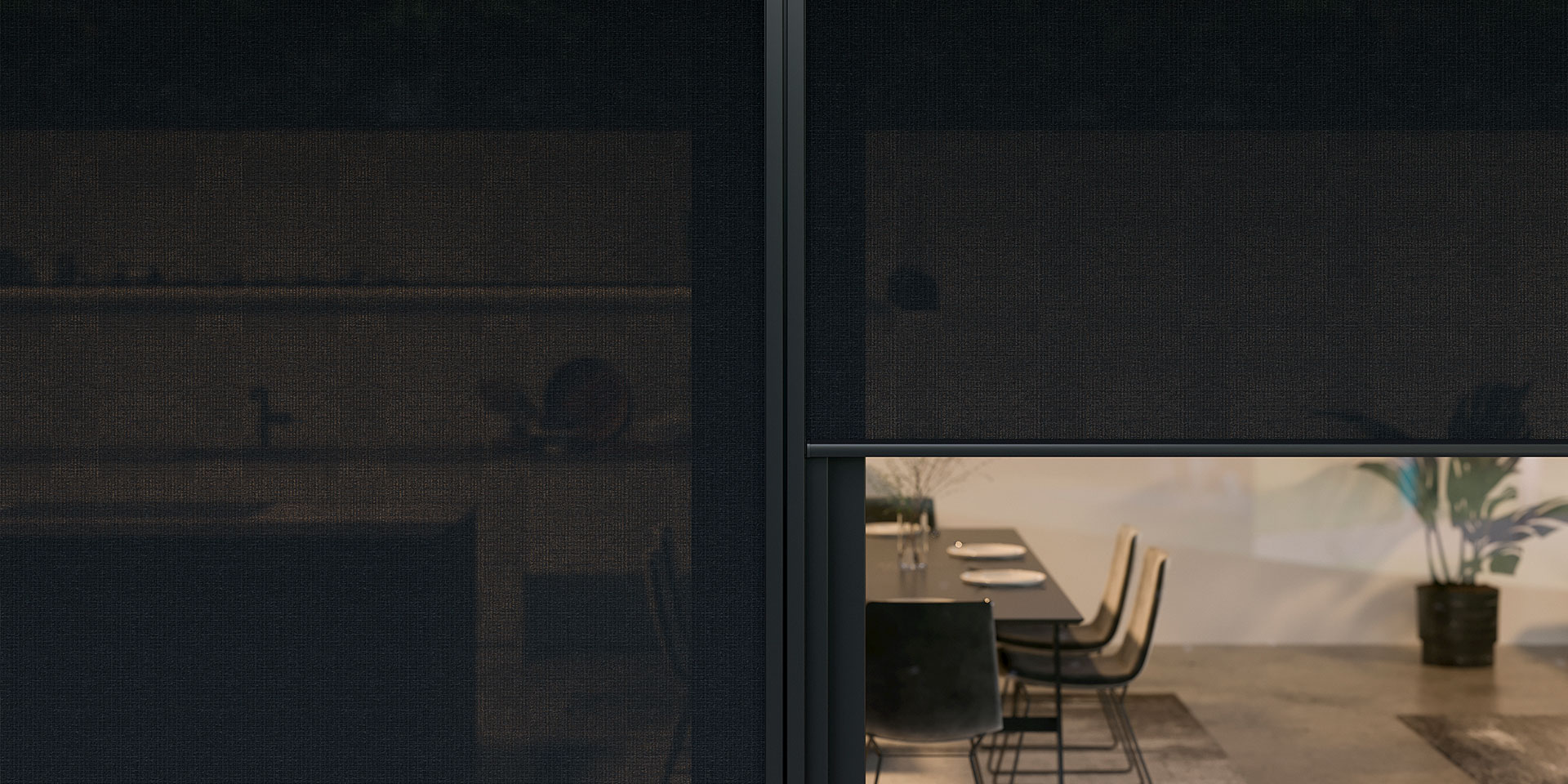
This is also affected by the size of the screen.
In addition to the guiding, the size of the screen is important as well. The larger textile screen you will have manufactured, the less resistant to wind it will be. In short, the sailing boat effect rises with an increasing area. Nevertheless, screens (in particular, zipscreens) are very resistant to wind.
For example, at NEVA we guarantee that zipscreens with a width of up to 1.6 metres can resist winds up to the speed of 88 km/h.
Wind resistance decreases with increasing dimensions.
UV radiation, rain and freezing conditions are no problem for the fabrics.
The fabrics of screens are designed for hard outdoor conditions. Manufacturers subject them to load tests that simulate product ageing. Then, based on such tests, they declare that the screens well resist the long-term effects of solar UV radiation.
So, it will not happen that a screen moulders or cracks over time due to the sun. You just need to take into account the fact that fabrics exposed to direct sunlight will begin growing pale slightly in the long term.
Similarly, rain does not pose any problems to the screens either. We only recommend that you do not unnecessarily pull up a screen that has just been soaked as the screen is heavy, so it loads the motor a lot. Besides, rolled up under the upper box, the screen dries with difficulty.
The screens have no problem with frost at all. They are resistant enough not to crack due to frost. Just take care that the screens do not freeze to the window sill. If this happens, do not draw them up.
You will be given certainty with sensors and premium motors
Although screens are very resistant, it is unnecessary for you to expose them to heavy rains or strong winds. That is why we recommend fitting them with automatic detectors and sensors that will draw the screens up or down depending on the weather.
Solar and wind detectors are most popular, and a rain sensor will come in handy to you as well. It is able to recognise rain, snow and hail and draws up the screens into the cover in time.
What’s more, at NEVA we fit the screens with motors having premium features. The most useful of them are:
- Recognising an obstacle. The motor will halt the movement of the screens if they come across an obstacle – for example, garden furniture. Similarly, it is capable of stopping the screens from lowering when the force of wind increases the friction in the side profile to such an extent that not even the bottom load profile can ensure that the fabric lowers fluently.
- Protection against freezing. If the bottom profile of a screen that has been pulled down is filled with snow and freezes to the place, the motor will recognise it immediately when pulling up the screen, stop and release the screen again. If you have your motor connected to a Smart Home system, it will report an error to you at the same time.
If you want to have a resistant textile screen at your home, we will be pleased to give you advice on choice in the article Complete guide: how to choose an external textile screen, or you can contact our partners.

